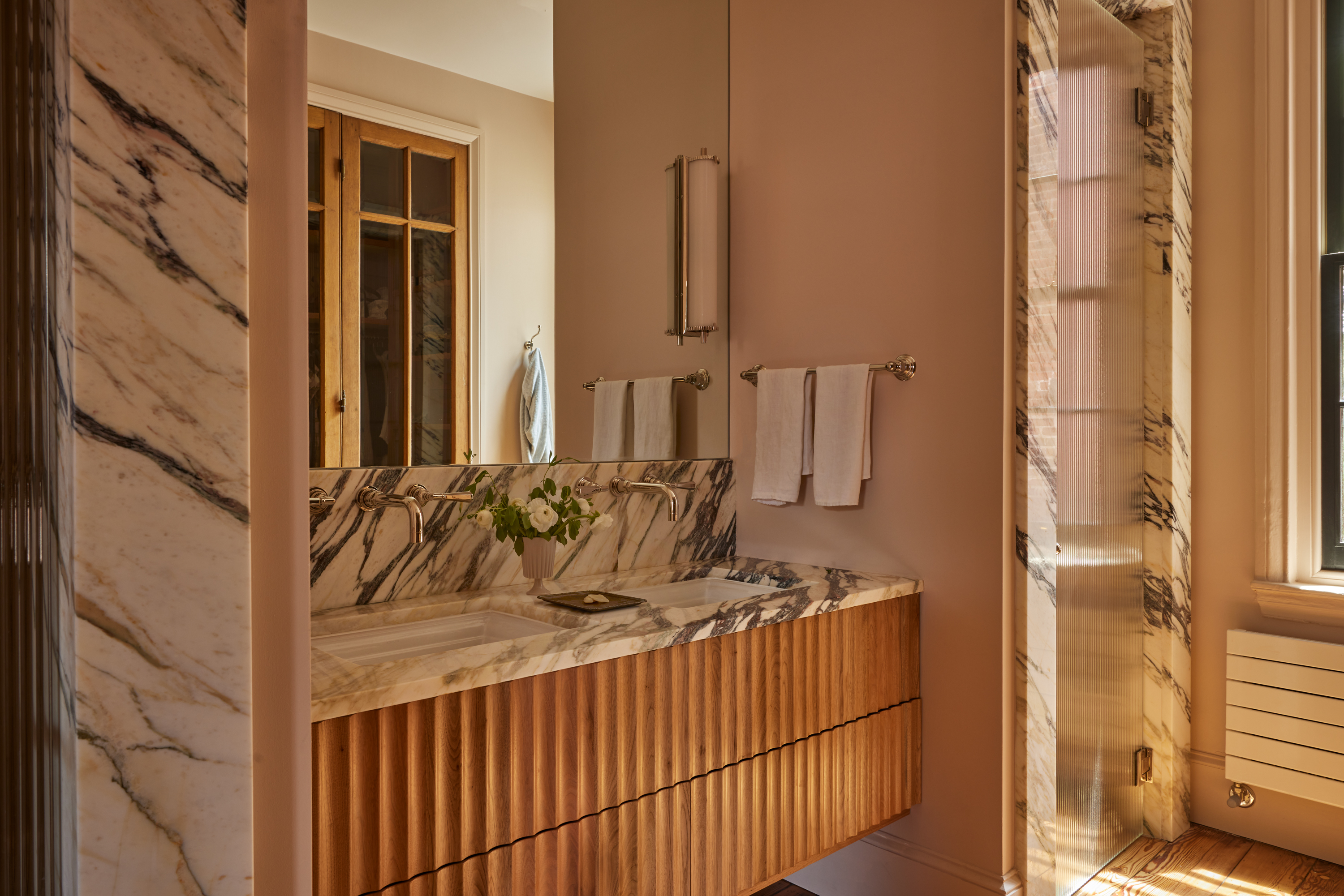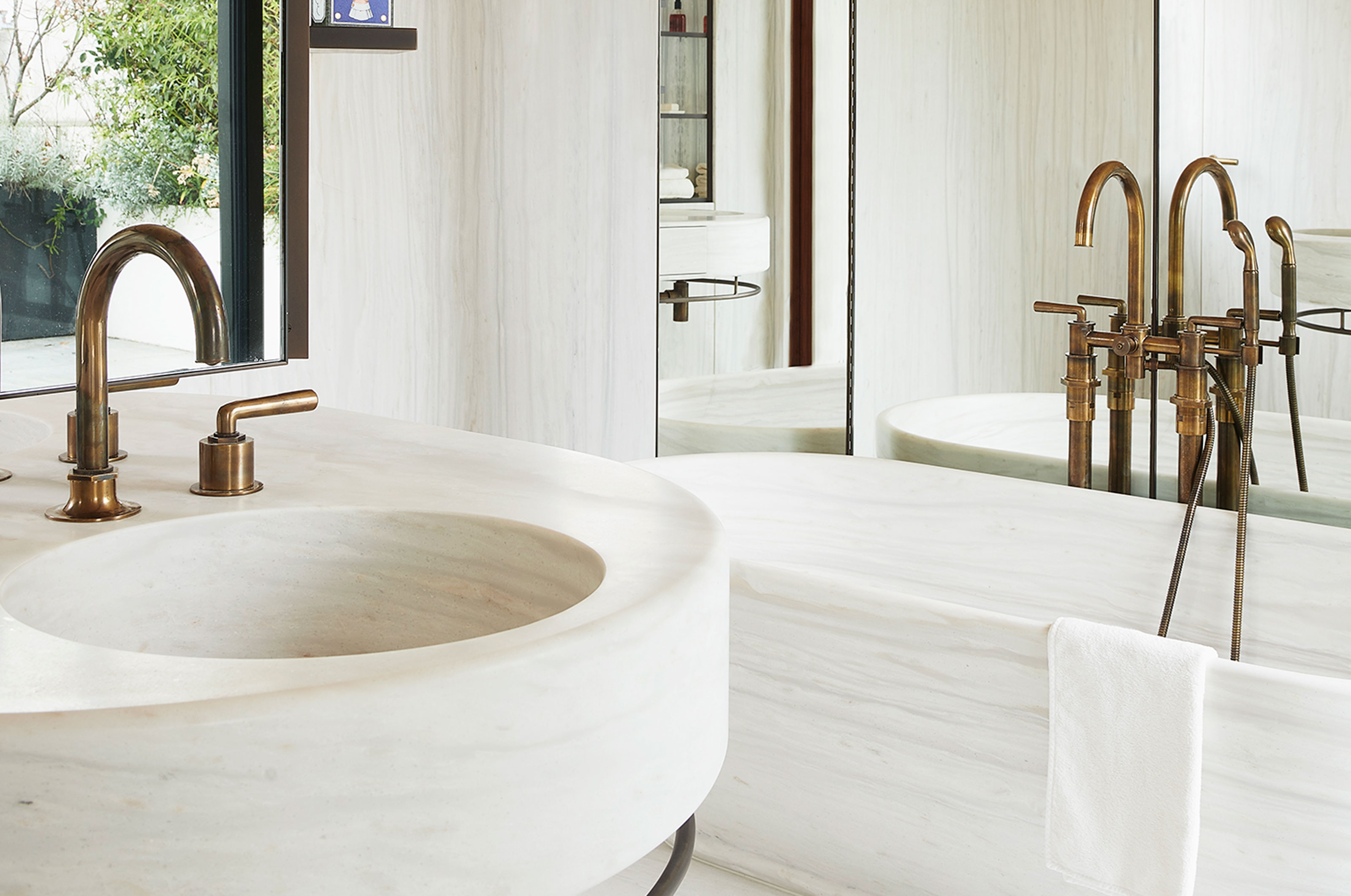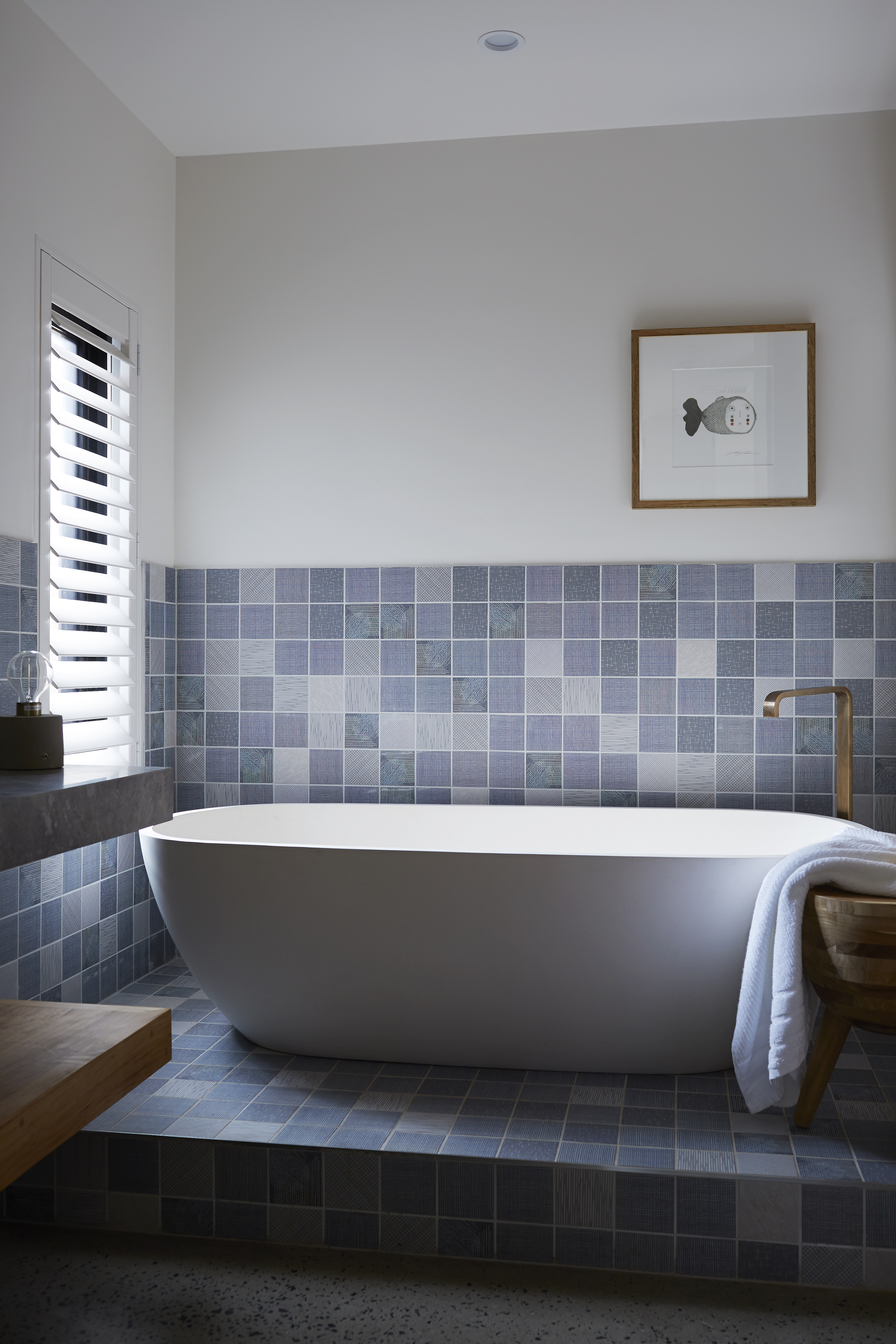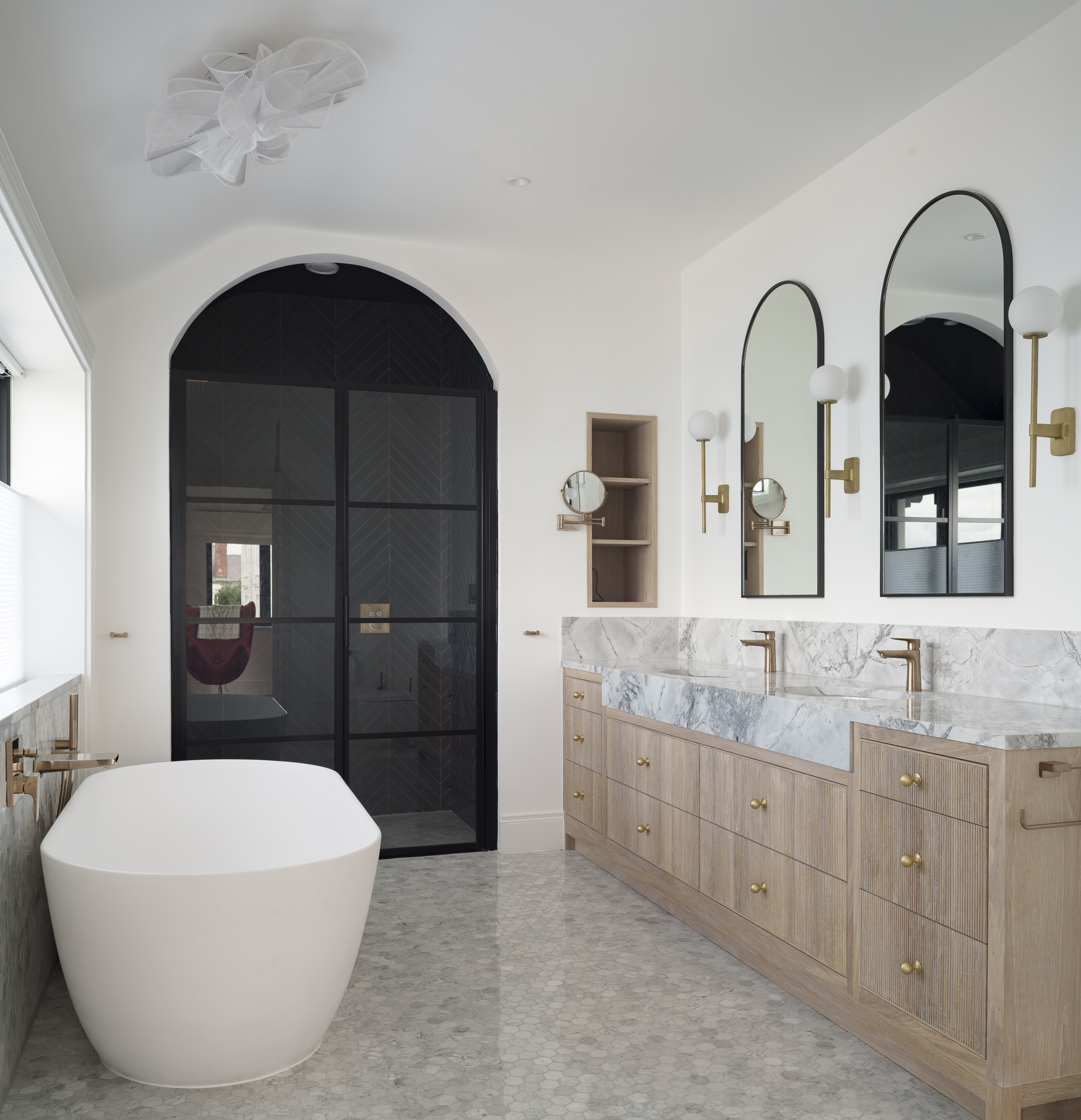
The first obvious thing to consider in a bathroom remodel is the budget. While costs may vary based on changing contractors, modifications, and market prices, it is possible to streamline your needs and have a good idea of the total expenditure, all without breaking the bank.
To help you figure out how to budget for your modern bathroom remodel, we asked experts for tips. While these won't entirely point to the accurate costs, the suggestions will help you have a pretty good ballpark, and show you how to financially prepare for the reno.
1. Know your needs

Before you remodel a bathroom, it would be advisable to create a sheet based on 'needs vs wants'. This will help you create a realistic plan for the makeover. Needless to say, it’s best to prioritize your budget by starting with the things you need. 'The first thing you need to know is the size of the space,' says Grey Joyner, founder of Grey Joyner Interiors. 'The square footage makes a huge difference.' You will then need to decide on the labor — will you be DIYing your project, hiring several subcontractors to handle different phases, or having one contractor or a designer on board? You also need to figure out the scope of work. Is this going to be an extensive remodel? Are you just giving your half-bathroom a small facelift? The scope of your remodel will determine the size and allocation of your budget.
'Think of small factors — do you want a shower and a tub together?' adds Grey. 'Or should those be separate? In terms of the bathroom vanity, would you prefer a dual or separate vanity? Is the bathroom going to do double duty? Does it need space for a washer and dryer? How much storage space will be needed and what will go into it? Knowing the answers will help you determine what to prioritize within the budget.'
2. Do a market research

'When adding value to a home with a remodel, it’s important to assess how your upgrades align with your home and neighborhood, ensuring they appeal to prospective buyers too,' says Danielle Krieg of Studio AM. 'Know the costs of plumbing fixtures, efficient lighting, and ample storage. Choosing the best elements can yield a high return on investment.'
Browse through online and retail stores. If you can draw out a mood board, that would be ideal so you know exactly what bathroom colors and finishes you need. A big tip is to purchase materials on your own if you can, as contractors charge a commission when products are bought through them. While building materials like insulation and drywall may be best procured by the contractor, you can buy individual pieces, like the bathroom mirrors, bathroom lighting, hardware, and so on.
'While buying bathroom hardware and fixtures, I'd advise sticking to trusted brands such as Caesarstone and Cambria, etc,' says Sondra Ganz, founder of Studio Ganz. 'There are some great trusted buy-out options that will last a long time.'
3. Review material options

'Choosing a marble bathroom could potentially double your stone costs, so consider what is most important to you and be flexible on it,' says Grey. 'Then seek materials, fixtures, furniture and product options that make sense.'
This is especially important if you're renovating a small bathroom that isn't the most used or prime location in the home. If a budget, cheap makeover is a priority, look for other alternatives that look relatively good but do not cost a fortune.
4. Know the labor costs

Once you have the product costs at hand, it's also good to speak to a few contractors so you have an idea of labor costs. Generally, installation to plumbing can cost anywhere from $2,500-$4000 respectively. Plus, you need electricians to help you with the wiring, which can cost you about $1500.
'Don't let the contractors budget the cheapest specifications or completely omit fixtures like shower tiles or panels in the initial conversations,' avers Sondra. 'Then this becomes a +$5-10K re-do that you're never happy with. This is certainly a conversation that should be had from the beginning to avoid any surprises or miscommunication.'
5. Be prepared for contingencies

Finally, no matter how well you plan for your minimalistic bathroom or a luxury one, unexpected expenses are bound to arise. These could be plumbing, insulation, or wiring upgrades that require more time and money than originally planned. Also, sometimes, the tear-out phase of remodels can lead to surprise expenses. You may find that the walls and floors have hidden mold and water damage, leading to repair costs that can run anywhere from $500 to $3,000.
This may not always be the case but always good tonallocate some extra money to overcome these challenges.







